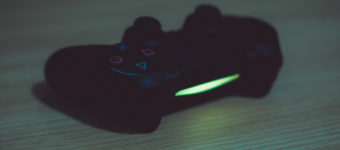
10 Best Art Philosophy Books
The philosophy of aesthetics and beauty won’t interest every artist. And it should go without saying that everyone can become an artist, even those who never study art philosophy.
But there is a lot to learn about the creative process. Creativity doesn’t come with a hard & fast ruleset, but there are some neat ideas out there you can pick up by reading other creatives.
These are some of my favorite books on general philosophies behind art, beauty, and creativity. If you want to dig deeper into why we create art & what makes art so fascinating this post will have something for you.
Philosophy of Art: Aesthetic Theory and Practice


In David Boersema’s Philosophy of Art you’ll read all about the fundamentals of art philosophy and how they apply to modern work.
Each chapter covers a different idea in philosophy with three core viewpoints: metaphysics, epistemology, and value theory.
You’ll mostly learn how to break down artwork and consider what’s being shown in each piece, why the subject was chosen, and what makes it so valuable.
Over 370 pages you’ll pick up a lot of cool ideas. They may not carry over into your personal art practice but these ideas should help to fine-tune your senses.
Just note this feels like a college textbook at times so the writing style may be tough to consume. But David also shares his own commentary along the way so there’s a nice mix of styles inbetween these pages.
The War of Art


In my humble opinion, every artist should read The War of Art. Author Steven Pressfield does an excellent job describing what makes creative tasks so difficult and why they can’t be churned out repeatedly like a machine.
There is something “higher” happening when we get ideas. Something makes us think of what to paint, draw, write… and these ideas seem to spontaneously appear out of nowhere. But ideas are easy to think up. Making those ideas a reality is hard.
In this 200-page ode to artists you’ll find boundless inspiration and plenty of insight towards the process of creativity.
Thankfully this is also a quick read so you can move cover to cover in a couple hours. Which also makes this a great book to re-read when you’re stuck in a creative rut.
I cannot think of another book that’s more inspiring, engaging, and speaks to the core of an artist’s goal.
The Art Spirit


Here’s another fantastic(yet much longer) book covering the ideas of inspiration and why we create visual art.
The Art Spirit by Robert Henri is a staple in many art schools for good reason. It covers an entire systematic approach to creating art, most of which Henri employed himself & shared with this students.
Note this book is quite a bit thicker than The War of Art and it’s also tougher to read. I find the language verbose and sometimes repetitive, yet also tactful & accurate.
If you’re looking for a decent mix of practical art advice with philosophy then you’ll want a copy of Henri’s book. It may take a few tries to get into it but once you “get it” you’ll never wanna put it down.
Philosophies of Art and Beauty


Philosophies of Art and Beauty is a massive volume of essays and writings from some of the world’s greatest thinkers.
Dating all the way back to Plato you’ll find ideas and concepts that have touched the art world and changed how we view artwork. Ideas like objective beauty and the process of visual representation are very complex; but they’re all valuable for aspiring artists.
I definitely find the writing a bit tougher here and somewhat confusing. But also very interesting.
Anyone can enjoy this book even if you don’t consider yourself an artist.
As long as you really enjoy artwork and want to delve beneath the surface of art, this book will never cease to leave you questioning.
Art & Fear


Authors David Bayles and Ted Orland put together Art & Fear as a way to write down all the little nuances that few artists talk about.
Most creatives face similar obstacles like creative block, self-doubt, and impostor syndrome among many other challenges. This book tackles everything head-on describing why it’s so damn hard to just make awesome stuff all the time.
It’s not really a guided book or a self-help manual. Instead this aims to describe the creative process accurately by covering what it feels like to be “in the zone” creating an amazing piece from start to finish.
But it also covers the pains of creative blockage and the fear of the blank page.
Certainly a great read and both authors are artists themselves. Really a book made by artists, for artists.
Introductory Lectures on Aesthetics


We’re back to more traditional philosophy concepts with Introductory Lectures on Aesthetics. Hegel is one of the most common philosophers with very strong opinions on the arts from sculpting to painting.
This book is a copy of Hegel’s opinions on art & beauty dating back to the early 1800s. Certainly an interesting read for anyone studying philosophy, art, or any mix of the two.
Plus this book include commentaries from artists and writers who share their thoughts on Hegel’s many opinions.
Granted this may not interest artists who don’t care much for deep non-pragmatic philosophy. Still, this is a treasure trove of great ideas that strive to explain why(and how) humans create art.
Steal Like an Artist


I can’t say this is a philosophy book. In fact, I’ll flat out say it’s not.
However the ideas inside are, in a way, quite philosophical to artists. And that’s why it deserves a spot in this list.
Austin Kleon wrote Steal Like an Artist a few years back and it’s still a huge success. This book is perhaps the easiest read in my entire list, and it’s also got some pretty solid ideas for aspiring and professional artists alike.
Over 160 short pages Austin shares his thoughts and experiences on creativity. Where ideas come from, how artists borrow from others, and how most works are derivative of something. Austin also shares what he considers “art” and forces you to ask that question of yourself.
This is a pretty short read and it may not interest everyone. But if you don’t want a copy you can pick up some of the same ideas for free by watching Austin’s TEDx talk.
Philosophy of the Arts: An Introduction to Aesthetics


Philosophy of the Arts: An Introduction to Aesthetics aims to provide a true introduction to anyone breaching this topic for the first time.
I have to say this book really hits the nail on the head.
It’s an easy read and the concepts are outlined beautifully in each chapter. You’ll find snippets from Aristotle to Hegel and plenty of other philosophers.
Topics range from the philosophy of beauty and aesthetics all the way to critiques on modern art.
Any creative will find value in this book.
It should be a staple introduction to the philosophy of art covering music, visual art, writing, dance, and pretty much every other form of creative expression.
Aesthetics: A Comprehensive Anthology


For a slightly more detailed read have a look at Aesthetics: A Comprehensive Anthology.
This isn’t much more than a compilation of many writings across many authors over thousands of years. Philosophers have debated aesthetics for quite a long time, and those ideas have changed as society has advanced.
I think this book does an excellent job of explaining how aesthetics work, how to think about aesthetics in art, and how they’ve adapted to blend with modern times.
Philosophy buffs the world over will love reading through ideas from Nietzsche to Schopenhauer. A great read if you’re into this stuff, although it’ll tough for a beginner to follow.
But Is It Art?


At first glance this book may seem provocative. And in some ways it is.
But author Cynthia Freeland really delves into rational and very personal ideas behind creativity and expression, notably in regards to controversial pieces that have changed the way society views art.
This can be anything from paintings of soup cans to more controversial TV shows like South Park.
But Is It Art? asks you to consider ideas on philosophy and art theory to see how they merge together. Many chapters even include discussions on psychology with brain scans and scientific data on how test subjects perceive different types of art.
The ideas in this book will help you see the bigger picture of art & how it has evolved over the years. What made certain art so abhorrent decades ago, yet now it’s normal and even innovative?
The answer to that question is discussed heavily in Cynthia’s writing. An excellent read if you’re curious to learn about art philosophy without too much stuffy-ness.











